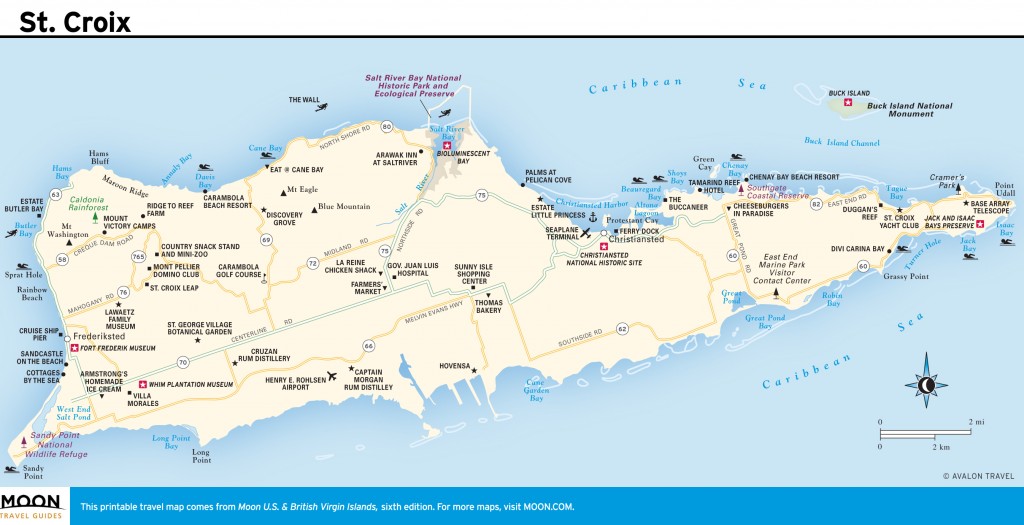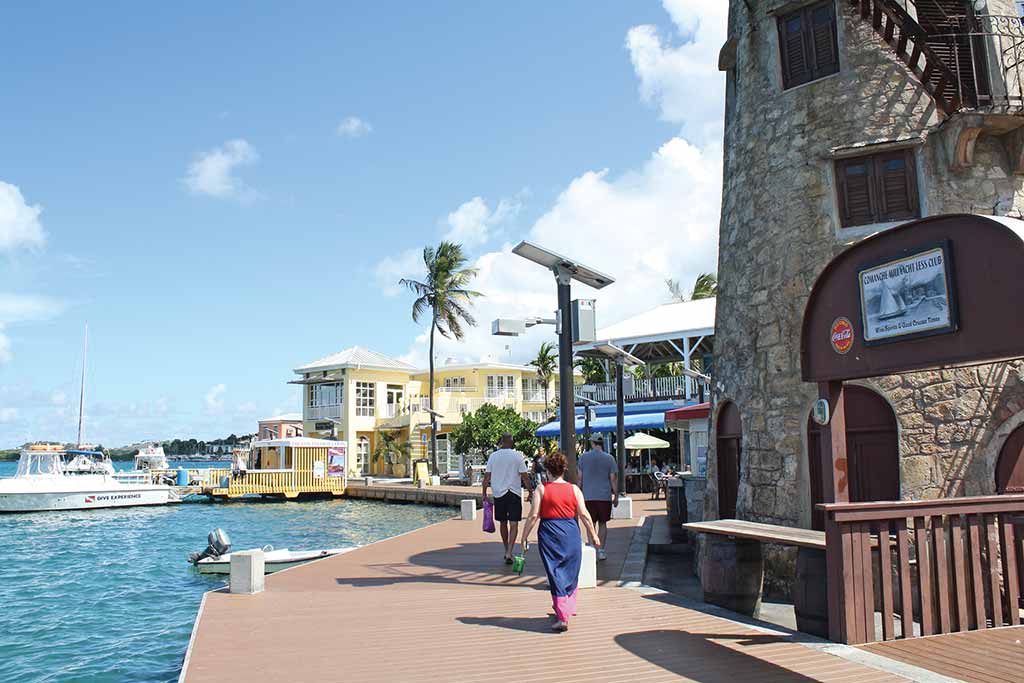The largest of the U.S. Virgin Islands is the richest in history, culture, and landscapes. St. Croix (pronounced CROY) lies 40 miles south of St. Thomas and St. John, on the other side of the cavernous Virgin Islands trough.
St. Croix is the most overlooked of the U.S. Virgin Islands, in part because it has been unwilling to smooth out all of its kinks for the benefit of tourists.The 84-square-mile island is 22 miles long and 6 miles wide. Beaches line the straight west coast, giving way to a dense tropical forest in the northwest. To the south, rolling hills slope toward the sea. The island tapers to a point at its extreme east end, where the spare landscape is characterized by cactus and wild frangipani trees. The Taino, among the island’s earliest inhabitants, called the island Ay-Ay (the River). The Kalinago, who lived on St. Croix several centuries later, named it Cibuquiera (the Stony Land).
St. Croix
Frederiksted, on the west coast, is a quiet, Victorian-style town where Crucians (CRU-shuns) come to enjoy the sunset and the island’s most laid-back vibe. Christiansted, on the north coast, is a bastion of historic sites, shopping, and creative eateries. In between, the countryside is dotted by great house and windmill ruins, built by African slaves when the island was a major sugar-producing colony. Place-names like Work and Rest, Humbug, All for the Better, and Patience Grove evoke the island’s colorful past.
Two large rum factories brew over 20 million gallons of grog for export annually, and livestock and racehorses graze in pastures which dot the island’s rolling hills. Just over 50,000 people make their home on St. Croix, about 1,000 fewer than St. Thomas, and the island’s ample proportions mean a lot more elbow room. Descendants of St. Croix’s African slaves make up the majority of the population, but successive waves of Caribbean immigrants, many from Puerto Rico, have enriched the native society. Settlers from the Middle East, the U.S. mainland, Canada, and Europe, including Danes who can trace their roots back to the days of slavery and sugar, complete the island’s diverse population.
Nowhere is St. Croix’s diversity more evident than in its music, food, and arts. You can spend an evening dancing to the infectious sounds of traditional scratch music or grooving to modern guitar jazz. Meals range from sophisticated fusion cuisine served in a historic town house to spicy fire-roasted chicken served from an open-air booth.
St. Croix is the most overlooked of the U.S. Virgin Islands, in part because it has been unwilling to smooth out all of its kinks for the benefit of tourists. Visitors who recognize the value of this realism will be rewarded by a dynamic, fascinating, and ultimately awesome island. While the Big Island is unable to match the pizzazz of St. Thomas or the untouched natural beauty of St. John, it has something neither of the other islands does: authenticity.
They don’t call St. Croix “The Big Island” for nothing. It can take all day just to circle it, and more than a week to tap into all the attractions and activities it has to offer. It is an island that deserves to be explored at a leisurely pace.

The boardwalk along Christiansted’s waterfront. Photo © Susanna Henighan Potter.
If you are looking for oceanfront accommodations, consider those located south of Frederiksted or west of Christiansted. If you prefer to be within walking distance of lots of different restaurants and sites, look for a hotel room in Christiansted. If you want to truly get away, consider staying a bit farther from the beaten track: in the rainforest, along the southern shore, or in a villa on the quiet east end.
St. Croix puts on some great annual events, and it is worth considering whether you can plan your visit to coincide with one. The annual Crucian Christmas Festival, which begins in mid-December and continues until Three Kings Day in January, is the biggest annual showcase of Crucian culture, arts, and music. The Agriculture Fair in late February, Half Ironman in April, and Mango Melee in July are also worthwhile.
St. Croix is an easy but expensive day trip from St. Thomas: Seaplanes make the 15-minute flight between Charlotte Amalie and Christiansted a dozen times a day. Unless you charter your own transport, St. Croix is not an easy day trip from any of the other Virgin Islands. If you’re on the island only a day, explore Christiansted for a couple of hours in the morning and then get a taxi to Cane Bay beach, Whim Plantation, or the St. George Village Botanical Garden in the afternoon. Or call Sweeny Tours (340/514-7734) for an island tour.
Excerpted from the Sixth Edition of Moon U.S. & British Virgin Islands.